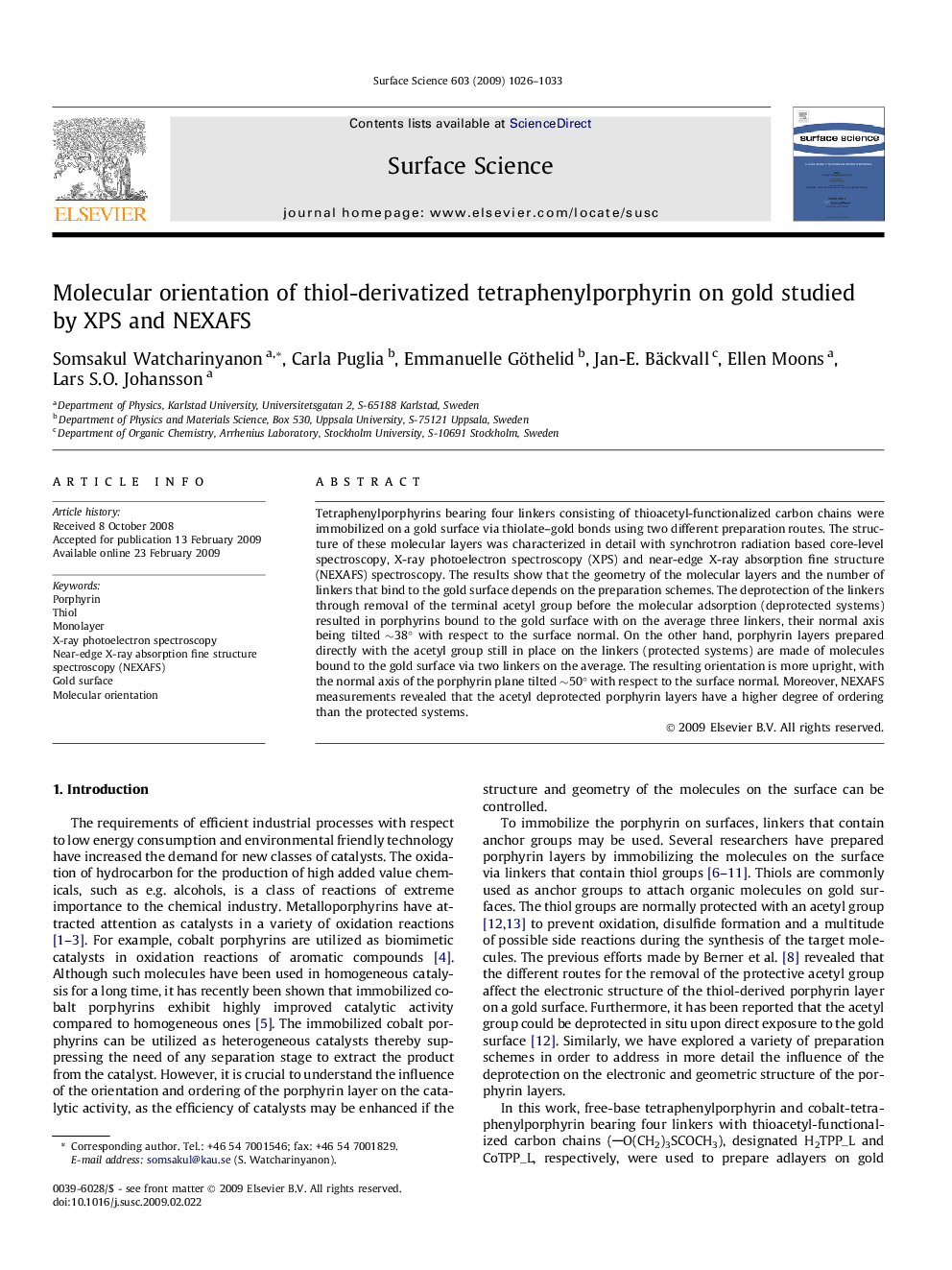| Article ID | Journal | Published Year | Pages | File Type |
|---|---|---|---|---|
| 5423926 | Surface Science | 2009 | 8 Pages |
Abstract
Tetraphenylporphyrins bearing four linkers consisting of thioacetyl-functionalized carbon chains were immobilized on a gold surface via thiolate-gold bonds using two different preparation routes. The structure of these molecular layers was characterized in detail with synchrotron radiation based core-level spectroscopy, X-ray photoelectron spectroscopy (XPS) and near-edge X-ray absorption fine structure (NEXAFS) spectroscopy. The results show that the geometry of the molecular layers and the number of linkers that bind to the gold surface depends on the preparation schemes. The deprotection of the linkers through removal of the terminal acetyl group before the molecular adsorption (deprotected systems) resulted in porphyrins bound to the gold surface with on the average three linkers, their normal axis being tilted â¼38° with respect to the surface normal. On the other hand, porphyrin layers prepared directly with the acetyl group still in place on the linkers (protected systems) are made of molecules bound to the gold surface via two linkers on the average. The resulting orientation is more upright, with the normal axis of the porphyrin plane tilted â¼50° with respect to the surface normal. Moreover, NEXAFS measurements revealed that the acetyl deprotected porphyrin layers have a higher degree of ordering than the protected systems.
Related Topics
Physical Sciences and Engineering
Chemistry
Physical and Theoretical Chemistry
Authors
Somsakul Watcharinyanon, Carla Puglia, Emmanuelle Göthelid, Jan-E. Bäckvall, Ellen Moons, Lars S.O. Johansson,
